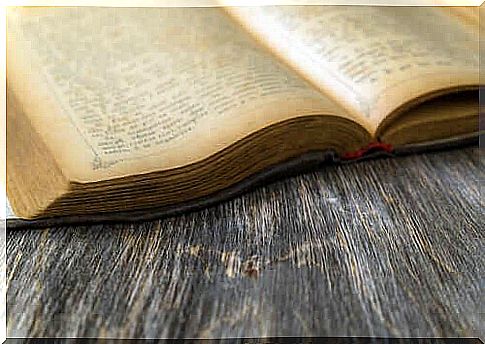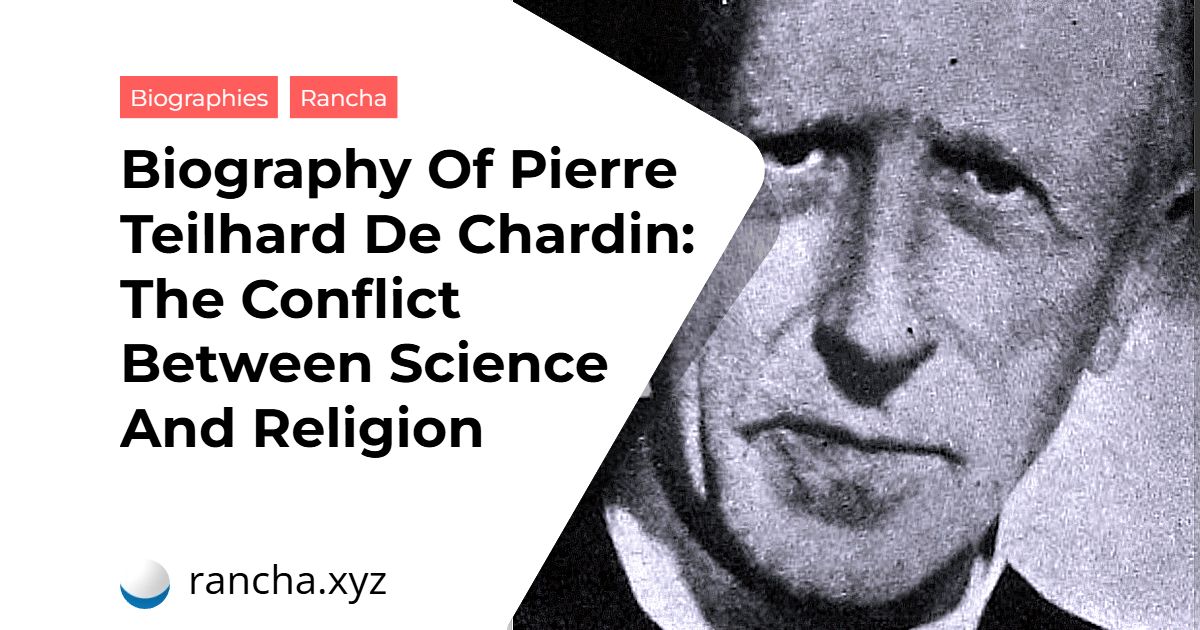Today we will talk about the biography of a French geologist, paleontologist, philosopher and theologian with a religious vocation, whose works have been translated into several languages: Pierre Teilhard de Chardin.
His belief in the fact that man is in continual mental and social evolution towards a final spiritual unity made him known.
His interest in science appeared already in his youth and, as a consequence, he tried to unify the scientific sphere with his work in the Jesuit order of which he belonged. Pierre Teilhard de Chardin argued that the human epic is nothing more than “a path towards the cross”.
This type of thinking triggered an ultimatum on the part of the Catholic Church in 1962. What was never questioned was his spiritual dedication and, even today, he is considered one of the most prominent figures in the scientific world.

The first years of the biography of Pierre Teilhard de Chardin
Pierre Teilhard de Chardin was born on May 1, 1881, into an aristocratic family in Auvernia. His childhood was in the countryside, in the castle of Sarcenat, owned by his parents. It was the fourth of eleven siblings and grew up in a purely traditional environment rooted in Catholicism.
After completing high school at the Jesuit College of Mongré, in Lyon, he began his novitiate in the Jesuit company of Aix-en-Provence. Later, he continued his studies in England. He studied theology in Jersey and in 1905 was ordained a priest in Hastings.
Alongside his religious vocation, Pierre Teilhard de Chardin developed a passion for science during his three-year stay in Egypt, where he taught physics and chemistry. After his ordination as a priest, he became interested in paleontology and geology.
He participated in some excavations and, back in France in 1912, he entered the paleontology laboratory of the Natural History Museum in Paris. It was then that he began a brilliant career as a researcher in human paleontology, and works in the excavations of the caves of Altamira, Spain.

Pierre Teilhard de Chardin and the war
In 1914, the war mobilized this young priest, although his religious vocation led him to serve as a nurse, not a soldier, in a regiment of skirmishes in Morocco. He completely refused to work as a priest during the war.
Chardin called this tremendously dramatic scenario presented by the experience of war as “his baptism into the real world.”
The war ended his foundations of philosophical thought and this was reflected in his early works: The Genesis of Thought and The Writings of Times of War. His great courage during the war earned him the Legion of Honor military medal.
Paleontology and travel
After the war, Pierre Teilhard de Chardin spent time in Paris, teaching at the Catholic Institute. In 1923, he carried out the first of his paleontology missions in China, where he joined the team that discovered the Peking Man skull.
During the 1930s, he made several other trips : to the Gobi desert, Java, Somalia, Kashmir, Mongolia and Burma. World War II broke out while he was in Beijing, a city in which he spent nearly six years in a state of semi-captivity.
It was during his stay in China that Pierre Teilhard de Chardin wrote two of his most mystical texts: The Mass in the World and The Spiritual Energy of Suffering.
the origin of man
In 1937, Chardin received the Mendel Medal in Philadelphia in recognition of his scientific research work in human paleontology. A year later, he founded the Beijing Geobiology Institute, and published several works in his prestigious scientific journal.
From 1951 onwards, Chardin took up residence in New York and, even from there, he was involved in several scientific expeditions in South Africa, in which he began to trace the African origin of man – nowadays accepted by science. He died in New York, on April 10, 1955, at the age of 74.
A controversial legacy
Pierre Teilhard de Chardin was an internationally recognized figure among his fellow scientists. His discoveries and hypotheses about the origin and destiny of the human being led him, throughout his life, to a constant conflict with the Roman religious authorities.
His theories about man’s place in the universe became teachings transmitted around the planet. He considerably disturbed the heart of the Catholic Church and, as a result, none of his unscientific works were published while he was alive.
All of them were published posthumously by his personal assistant, starting in 1964, when the Pierre Teilhard de Chardin Foundation was created, becoming the legacy of this extraordinary scientist.
 rancha.xyz Be free to choose their own route to self-knowledge, health and balance of body and soul.
rancha.xyz Be free to choose their own route to self-knowledge, health and balance of body and soul.




